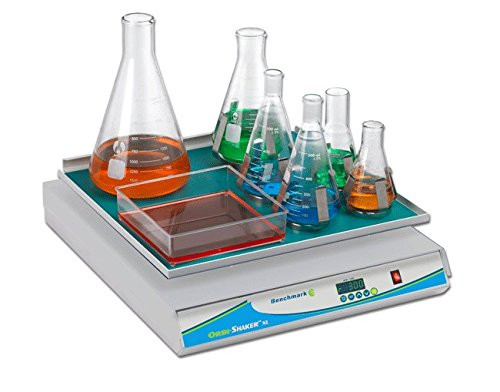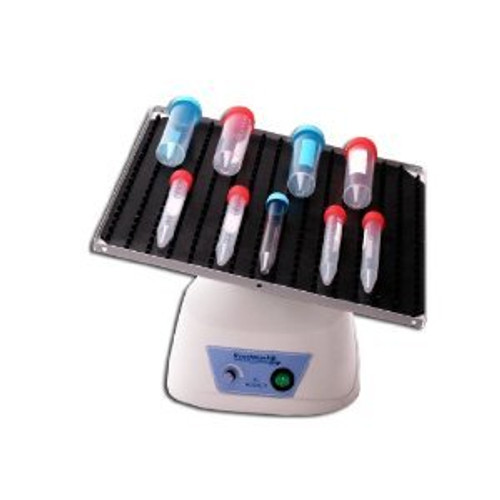Brand: IBI Scientific
Features:
- Benchtop analog shaker uses 115V at speeds between 0 to 100rpm for uniform mixing with a smooth continuous circular motion
- Control collar below platform adjusts tilt angle between 0 to 8 degrees for ease of operation
- Orbital motion range of 1" with overload detection to ensure even mixing
- Chemically-resistant acrylic, 12 x 12 inches (W x D) platform holds up to 20lb. and, depending on the model, comes with a 2nd story, nesting, or tube mat accessory platform
- Direct drive motor for quiet operation and long life
IBI Scientific
Release Date: 15-05-2017
Details:
The IBI Scientific Belly Dancer benchtop analog orbital shaker with accessory platform uses 115V at speeds between 0 to 100rpm, and has an adjustable tilt angle between 0 to 8 degrees, an orbital motion range of 1", a chemically-resistant acrylic, 12 x 12 inches (W x D) platform, and a direct drive motor. This shaker has a control collar below the platform to adjust the tilt angle between 0 to 8° for ease of operation. The orbital motion provides uniform mixing with a smooth continuous circular action. The chemically-resistant acrylic platform holds up to 20lb. This unit also comes with an accessory platform (depending on the model, a 2nd story, nesting, or tube mat platform) to extend the functionality of the shaker. A direct drive motor provides quiet operation and long life. Laboratory shakers are used in many analytic procedures, including drug analysis, water pollution analysis, and hemolysis.
Laboratory shakers agitate liquids during laboratory procedures. These devices can be analog or digital and are typically an automated, electrically powered, countertop unit that shakes liquid in lab containers, such as flasks, funnels, or test tubes. Some shakers can operate inside fume hoods, incubators, refrigerators, or other laboratory devices, and can include controls for the frequency and/or degree of movement. The types of shakers include: orbital, rocking, rolling, rotating, and wrist action. The most common orbital shaker provides a smooth, continuous, circular motion, sometimes with a tilt angle, for uniform mixing of contents. The rocking shaker creates gentle uniform mixing with a see-saw, or up and down, motion. Reciprocating, or rolling, shakers provide a horizontal side-to-side motion with simple agitation of samples. A rotating, or rotisserie, shaker provides samples with a rotating action that moves in a circular motion. Wrist-action shakers duplicate the effect of hand mixing with "arms" on each side of the unit. Some shakers










